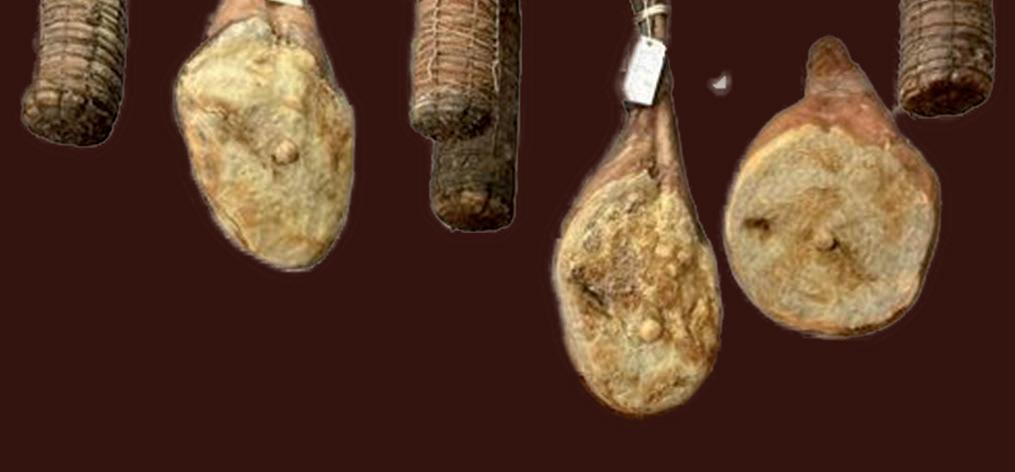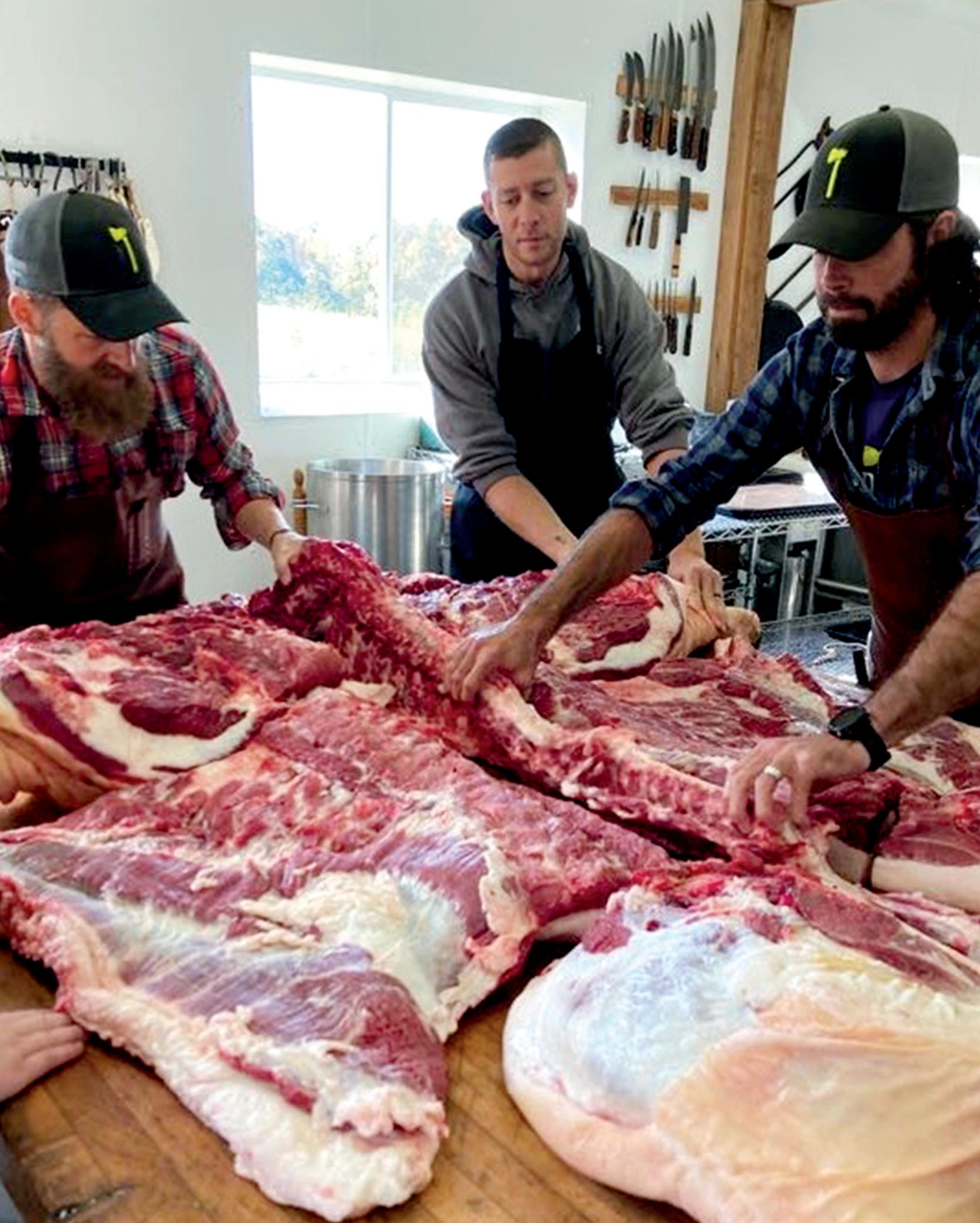
3 minute read
CO-OP PEOPLE

Butchering school
Frontier Power Company members teach lessons that go from pasture to table.
BY MARGIE WUEBKER
Friends Andy Lane and Doug Wharton off er tasty lessons and plenty of hands-on experience during unique “Pasture to Plate” workshops at rustic Hand Hewn Farm in rural Tuscarawas County. They have been off ering intensive three-day whole hog sessions since 2019, showing participants how to proceed from dispatching a hefty forest-raised hog with a single shot to preparing the carcass and then effi ciently breaking it down into hams, tenderloin, sausage, bacon, and other components. The men, who began homesteading at the Fresno-area farm once owned by Lane’s grandmother in 2015, raise heritage hogs, chickens, and rabbits. They initially learned to butcher for their families’ consumption, relying on pointers from oldtimers as well as detailed books on the subject. “We learned through trial and error,” says Wharton, a former commercial contractor. “Now we focus on doing it right and demonstrating how to use each cut to its best purpose.” Classes are off ered in a former milking parlor equipped with a large walk-in cooler and a spacious butcher block table capable of accommodating 8 to 10 participants at a time. Banks of wall shelves hold tools of the trade — knives and cleavers in various sizes. Word of their hands-on sessions spread slowly at fi rst, but the demand exploded when COVID-19 struck in 2019, closing a number of meat-packing plants and markets. Lane, a retired art teacher, says many people decided they wanted to learn the butchering process to ensure a safe and ready supply of meat for their dinner table. Initially, most classes were held at the Fresno-area farm, but word of the off erings has allowed them to spread beyond Ohio. The men have presented sessions in Michigan, West Virginia, Pennsylvania, North Carolina, New Jersey, Oklahoma, Texas, and California. The schedule usually runs fall through early spring, with October to March being the busiest times. The format is fairly set: Day one involves the killing of the hog, then evisceration, scalding, and scraping the carcass, cutting it into halves, and cleaning the intestines that later will hold blood sausage. Day 2 begins with Lane and Wharton helping participants cut the sections into standard American cuts and


Butchering school
variations. Salting, seasoning, and curing takes place on the fi nal day. The men occasionally add a fourth day dedicated to charcuterie — the art of curing and drying meats for preservation and fl avor that results in products like salami, prosciutto, pâté, and soppressata. “Many fi rst-timers are surprised about the cleanliness of the butchering process and the small degree of waste,” Lane says. “We render lard from the skin and fat, use organs for special products, and boil the bones for broth. Somebody once said we use everything but the squeal, and that’s certainly true.” Participants not only gain information that can be used later, but many leave sporting a couple extra pounds thanks to the hearty meals served during the 10- to 12-hour class days. The program has drawn its share of confi rmed foodies. The men have off ered beef workshops, but it is the in-depth hog sessions that have become their bread and butter. Upcoming workshops are listed on their website and quickly sell out.
Hand Hewn Farm, 10990 Patterson Road, Fresno, OH. 330-503-3883; www.handhewnfarm.com or find on Facebook and Instagram.

Right: After the initial butchering, students put the parts back together to show where all the parts were cut. Below: A group of students with their teachers (Andy Lane and Doug Wharton, in matching hats) after a recent workshop (photos courtesy of Hand Hewn Farm).





